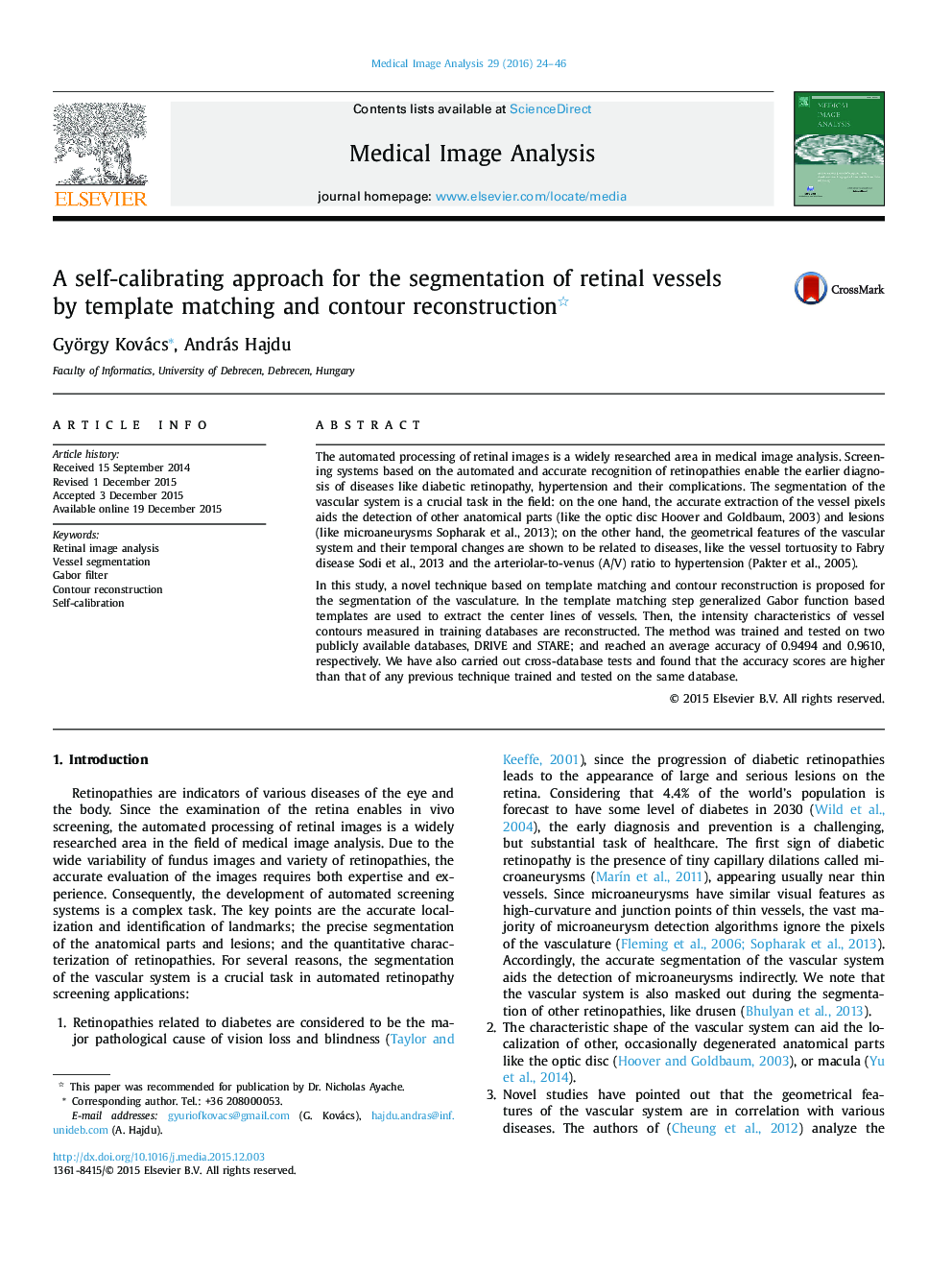| کد مقاله | کد نشریه | سال انتشار | مقاله انگلیسی | نسخه تمام متن |
|---|---|---|---|---|
| 443969 | 692832 | 2016 | 23 صفحه PDF | دانلود رایگان |

• The generalized Gabor function based templates can model vessels accurately.
• Relative intensities can be used to accurately reconstruct the contours of vessels.
• The interference of template matching can be used to extract thin vessels.
• Blind calibration is a reasonable way to improve the segmentation of vessels.
• The proposed method is robust and competitive with previous works.
The automated processing of retinal images is a widely researched area in medical image analysis. Screening systems based on the automated and accurate recognition of retinopathies enable the earlier diagnosis of diseases like diabetic retinopathy, hypertension and their complications. The segmentation of the vascular system is a crucial task in the field: on the one hand, the accurate extraction of the vessel pixels aids the detection of other anatomical parts (like the optic disc Hoover and Goldbaum, 2003) and lesions (like microaneurysms Sopharak et al., 2013); on the other hand, the geometrical features of the vascular system and their temporal changes are shown to be related to diseases, like the vessel tortuosity to Fabry disease Sodi et al., 2013 and the arteriolar-to-venus (A/V) ratio to hypertension (Pakter et al., 2005).In this study, a novel technique based on template matching and contour reconstruction is proposed for the segmentation of the vasculature. In the template matching step generalized Gabor function based templates are used to extract the center lines of vessels. Then, the intensity characteristics of vessel contours measured in training databases are reconstructed. The method was trained and tested on two publicly available databases, DRIVE and STARE; and reached an average accuracy of 0.9494 and 0.9610, respectively. We have also carried out cross-database tests and found that the accuracy scores are higher than that of any previous technique trained and tested on the same database.
Figure optionsDownload high-quality image (130 K)Download as PowerPoint slide
Journal: Medical Image Analysis - Volume 29, April 2016, Pages 24–46